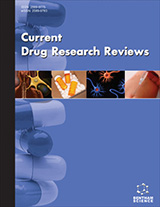
Abstract
Objective: Ketamine, commonly known as “K-powder,” is increasingly being abused as a “prom drug.” Palmatine, a typical isoquinoline alkaloid, is mainly found in the roots and stems of natural Chinese herbal medicine plants such as Phellodendron chinense, Coptis chinensis, Sankezhen and Nantianzhu. Herein, we aim to establish a UHPLC-MS/MS method to determine ketamine and palmatine concentrations in rat plasma and investigate the pharmacokinetic interaction of ketamine and palmatine.
Methods: Three groups of eighteen rats each were assigned to ketamine, palmatine, ketamine and palmatine. The pharmacokinetic interaction between ketamine and palmatine was demonstrated using UHPLC-MS/MS.
Results: When ketamine was combined with palmatine, the mean residence time (MRT) was significantly different from that of the ketamine group. MRT decreased after combined use. The interaction showed that palmatine can influence the mean residence time of ketamine; no significant differences were observed for other pharmacokinetic parameters between the ketamine or palmatine group and the ketamine-palmatine group.
Conclusion: Palmatine may influence the mean residence time of ketamine.
Graphical Abstract
[http://dx.doi.org/10.1080/00952990.2022.2132506] [PMID: 36410032]
[http://dx.doi.org/10.1016/S2215-0366(22)00317-0] [PMID: 36244360]
[http://dx.doi.org/10.1016/j.forsciint.2010.04.047] [PMID: 20537829]
[http://dx.doi.org/10.1111/j.1556-4029.2006.00331.x] [PMID: 17209915]
[http://dx.doi.org/10.1002/dta.3336] [PMID: 35716363]
[http://dx.doi.org/10.4103/pm.pm_90_17] [PMID: 29576706]
[http://dx.doi.org/10.1016/j.pnpbp.2018.02.009]
[http://dx.doi.org/10.3390/ijms242216303] [PMID: 38003493]
[http://dx.doi.org/10.1016/S0962-8924(01)01980-8] [PMID: 11316611]
[http://dx.doi.org/10.1016/j.neuropharm.2007.08.004] [PMID: 17888459]
[http://dx.doi.org/10.1016/j.pbb.2010.08.016] [PMID: 20816889]
[http://dx.doi.org/10.2147/DDDT.S280520]
[http://dx.doi.org/10.1002/ptr.6504] [PMID: 31496018]
[http://dx.doi.org/10.1007/s11356-023-28802-4] [PMID: 37488386]
[http://dx.doi.org/10.1002/bmc.5821] [PMID: 38217347]
[http://dx.doi.org/10.1002/bmc.5419] [PMID: 35638105]
[http://dx.doi.org/10.1155/2018/6562309]
[http://dx.doi.org/10.4155/bio.14.117] [PMID: 25384588]
























